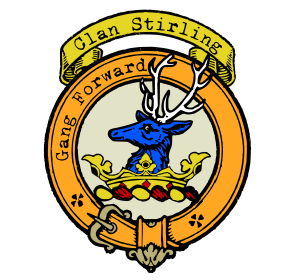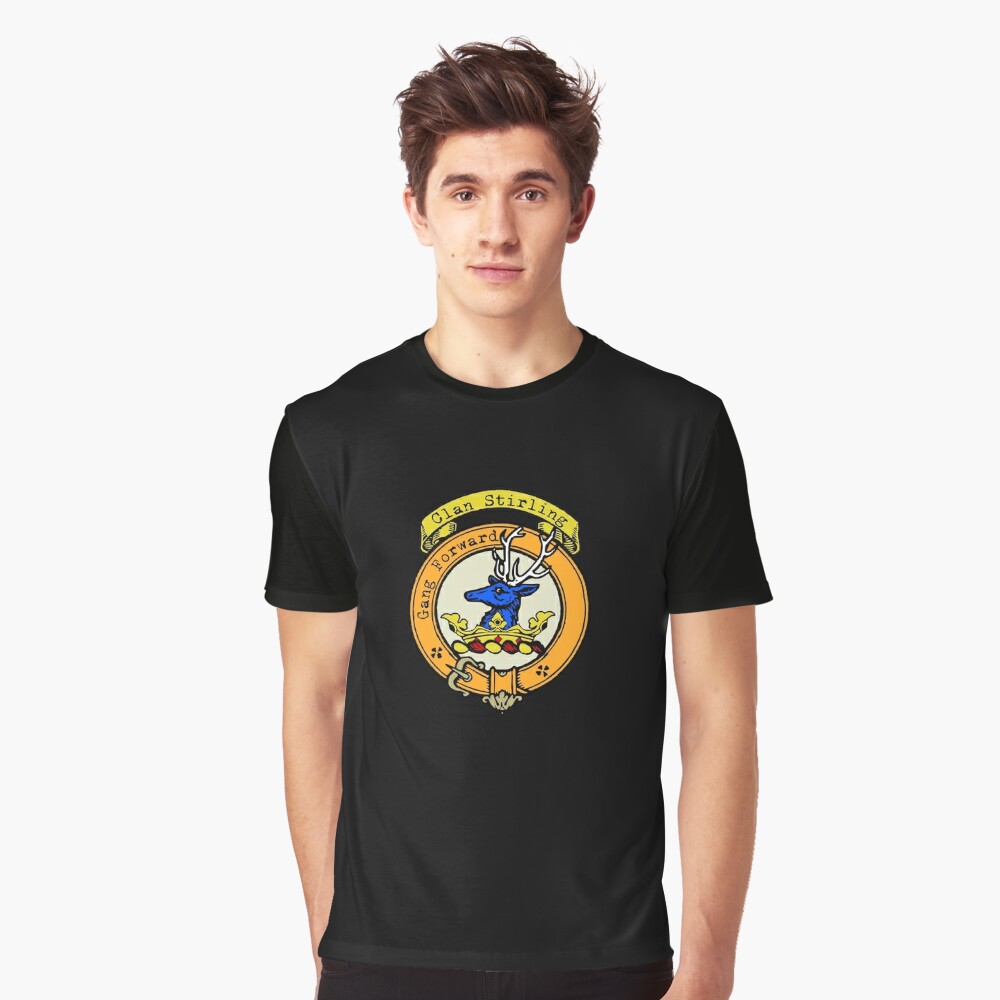Clan Stirling
|
|
CREST: Issuing out of an antique coronet Or a hart’s head couped Azure MOTTO: Gang Forward TRANSLATION: Go Forward Bravely VARIATIONS: N/A |
| At the crossroads of Scotland, nestled amidst the iconic town and Castle of Stirling, we find the origins of Clan Stirling. The name itself, “Stirling,” is thought to mean “place of strife,” a fitting moniker for a clan that witnessed and participated in some of the most significant events in Scottish history.
The earliest mention of Clan Stirling can be traced back to Thoraldus, who held the lands of Cadder and appeared in a charter granted by King David I around 1147. From these humble beginnings, the clan’s history unfolds, intertwining with the fate of Scotland itself. The clan’s leadership passed down through generations, each member playing a unique role in Scotland’s turbulent history. Sir Alexander de Strvelyn, the fifth Laird of Cadder, set the stage by defending the clan’s lands in 1304. His successor, Sir John de Strivelyn, met his fate at the Battle of Halidon Hill in 1333, a testament to the clan’s unwavering commitment to Scotland. As the centuries rolled on, Clan Stirling’s influence grew. Sir John de Strivelyn, the third Lord of Cragernard, served as the governor of Dumbarton Castle and sheriff of Dungbartonshire. In 1430, he was knighted, marking a significant milestone in the clan’s history. The Stirling clan’s loyalty to the Stuart dynasty did not go unnoticed. They were granted a royal augmentation to their arms, a double tressure akin to that on the royal arms of Scotland. This recognition symbolized their steadfast commitment to the crown. The acquisition of the lands of Keir in Perthshire solidified the clan’s place in Scottish nobility. Sir William Stirling of Keir, a staunch supporter of Prince James during a rebellion against his father, eventually rose to favor when James IV ascended to the throne. His descendants continued to serve the monarchy, even through the upheavals of the 1715 and 1745 uprisings. Throughout their history, Clan Stirling produced numerous notable figures. Sir Archibald Stirling of Keir, for instance, played a pivotal role in the Supreme Court and supported the monarchy during times of civil strife. The clan’s contributions extended beyond Scotland’s borders, as exemplified by William Stirling of Keir, who authored books and served as an MP. Even today, Clan Stirling remains an integral part of Scotland’s cultural and political fabric. Sir George Stirling, ninth Baronet of Glorat, served as the keeper of Dumbarton Castle in the 20th century. The family continues to hold significant positions, with Lieutenant Colonel Stirling of Garden serving as the Lord Lieutenant of Stirlingshire. In 1986, the clan saw a generational transition with the passing of Sir Charles Stirling of Cadder, a distinguished diplomat who received honors from the Crown for his service. |
|
Citations:
|
|
Purchase @ Redbubble
Purchase @ Amazon.com
Purchase @ Amazon.co.uk

